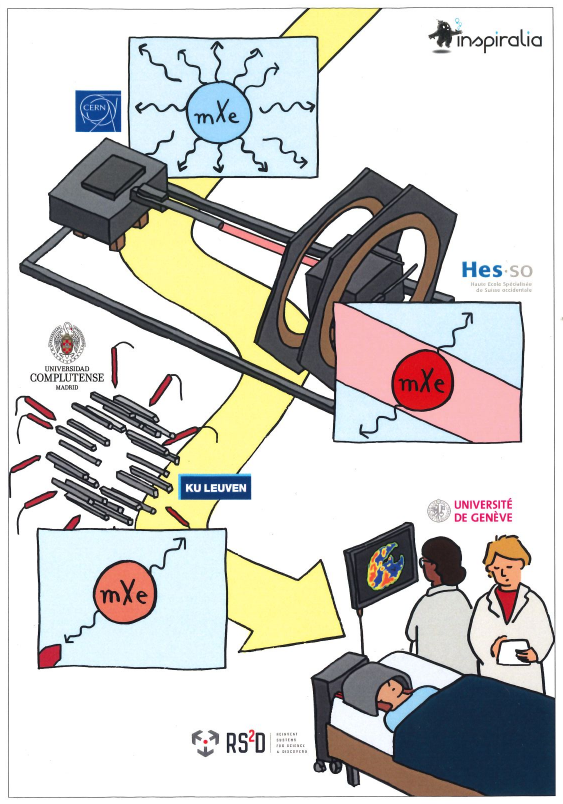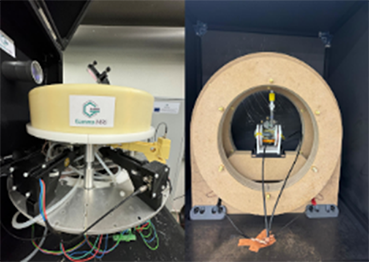

The Gamma-MRI project, funded by the European Horizon 2020 program, set out to create a novel molecular imaging device that combines the spatial resolution of MRI with the sensitivity of gamma-ray detection, similar to PET/SPECT. The approach uses hyperpolarised radioactive xenon isotopes as tracers.
The project focused on producing gamma-emitting xenon isomers, preserving their polarisation long enough to reach target organs, and developing advanced acquisition and reconstruction methods based on physics modelling and artificial intelligence. A prototype was designed and built around a low-field versatile magnet, avoiding the need for ultra-high magnetic fields or heavily shielded environments.
By 2024, the consortium had successfully demonstrated the first prototype and conducted preclinical brain imaging experiments. These achievements paved the way for applications such as stroke diagnosis, opening new possibilities for faster, more precise, and widely accessible molecular imaging.

Project partner(s)
Project leader - team
Stavroula Pallada
(HEPIA) (HEdS),
Nicola Giandomenico
(HEPIA),
Anastasios Kanellakopoulos
(HEPIA),
Ashley Cooper
(HEPIA) (HEdS),
Quentin Rogliardo
(HEPIA),
Hugo Corcelle
(HEPIA),
Bryan Musy
(HEPIA),
Harley Stoeckli
(HEPIA)
